|
Double
Fixtures
Occasionally
double fixtures - two fluorescent tubes mounted together
- are used in larger vivaria. If all the necessary UVB is
provided by one lamp, the other may be of a daylight type,
emitting no UVB, but enhancing the colour balance and intensity
of the visible light. Where higher levels of UVB are required,
however, two UVB tubes may be fitted.
We have
taken measurements from double fixtures both in the vivarium,
and in a test situation, to measure their combined output,
with and without reflectors. The results are very much what
one would expect. Two tubes (with no reflectors) put out
almost double the amount of UVB as a single tube. Two tubes,
both fitted with reflectors, put out almost twice as much
as one tube fitted with a reflector, and not quite four
times as much as a single tube with no reflector.
We conducted
two sets of experiments. In the first set, we used two new
Zoo Med Reptisun 5.0 24" tubes controlled by a single electronic
ballast, a Glomat 2 Double Fluorescent Lighting Control
Unit from Rolf C. Hagen (UK) Ltd. The output of the tubes
was measured when they were positioned separately and together,
both with and without reflectors. (Figs. 4 - 7)
In the
second set of experiments, we used two older Arcadia D3
Reptile 24" tubes controlled by two single magnetic
ballasts, namely a pair of Arcadia Fluorescent Lighting
Controllers.
The
results for the first set of tests are shown in Graph 2
(below); the results for the second set were almost identical
in terms of the effect of each combination upon output.
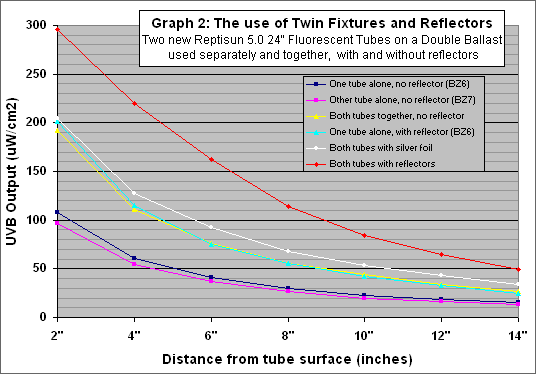
Care
must be taken when using powerful combinations of tubes
and reflectors. For example, whereas the single Zoo Med
Reptisun 5.0 24" tube emitted 18uW/cm2 at 12", when two
identical tubes were fitted with reflectors and placed side
by side, the reading at 12" was 65uW/cm2.
This
would provide a high level of UVB over a wide area, which
might be suitable for some species, but too high for others.
It would also produce a very large, very bright light source.
For the comfort of the animals in the vivarium, this would
almost certainly need to be directly above them, since if
it were affixed to a side wall they would have no option
but to look directly at its glare when facing that way.
Certainly testing the double combination shown in Fig. 7
was quite unpleasant, owing to the glare, even though eye
protection was worn.
|


















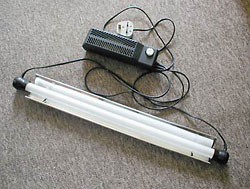 The
use of a reflector can produce a remarkable increase in
UVB output at a basking spot. Even a piece of ordinary aluminium
foil placed behind a fluorescent tube will significantly
improve its performance, but if a reflector, such as the
inexpensive clip-on type used for aquarium lighting, is
fitted to a UVB tube it is possible to virtually double
the output of the tube. The reflector effectively gathers
a large percentage of the UV light from the sides and back
of the tube, which would otherwise be absorbed by the walls
of the vivarium, and redirects this forward into the enclosure.
The
use of a reflector can produce a remarkable increase in
UVB output at a basking spot. Even a piece of ordinary aluminium
foil placed behind a fluorescent tube will significantly
improve its performance, but if a reflector, such as the
inexpensive clip-on type used for aquarium lighting, is
fitted to a UVB tube it is possible to virtually double
the output of the tube. The reflector effectively gathers
a large percentage of the UV light from the sides and back
of the tube, which would otherwise be absorbed by the walls
of the vivarium, and redirects this forward into the enclosure.
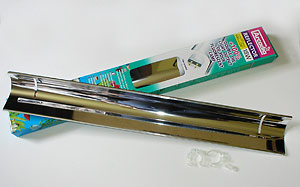 We
measured the output of a large number of tubes with and
without a variety of reflectors including sheets of aluminium
foil, home-made curved aluminium foil reflectors and commercially
available reflectors such as the clip-on Arcadia Reflector
(Fig. 2), which is available in a range of lengths to fit
most tubes.
We
measured the output of a large number of tubes with and
without a variety of reflectors including sheets of aluminium
foil, home-made curved aluminium foil reflectors and commercially
available reflectors such as the clip-on Arcadia Reflector
(Fig. 2), which is available in a range of lengths to fit
most tubes. 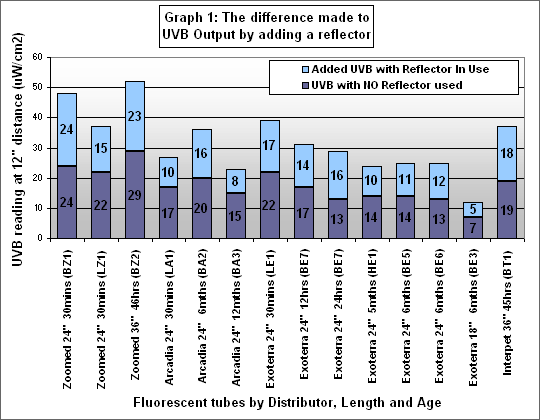
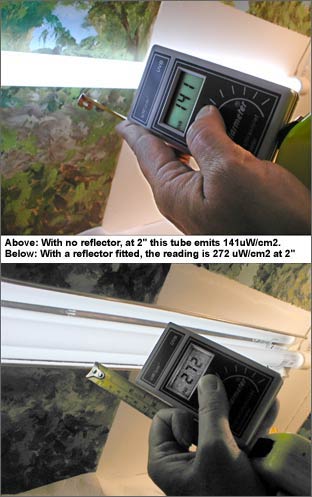
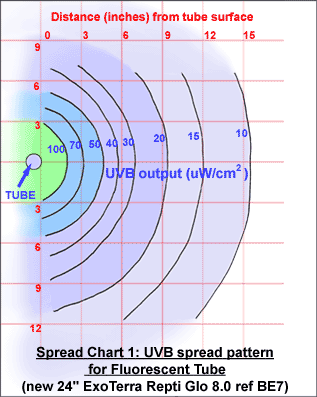
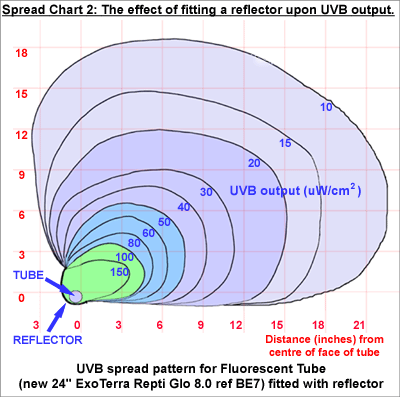
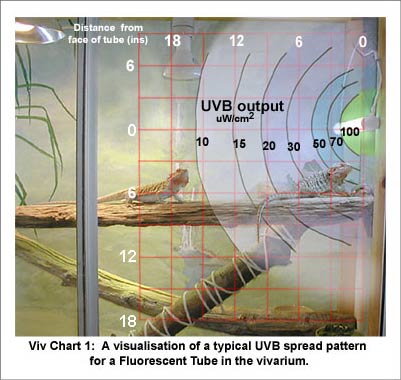
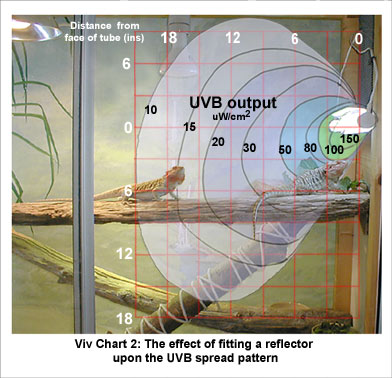
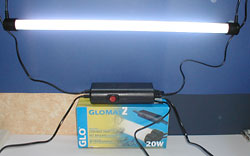
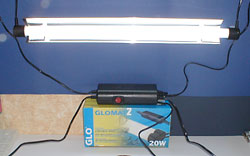
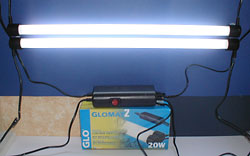
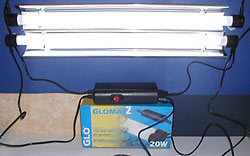

 The
Fluorescent Tube Survey Results
The
Fluorescent Tube Survey Results